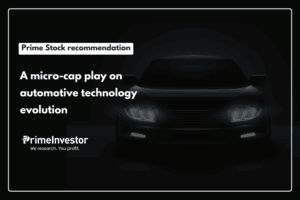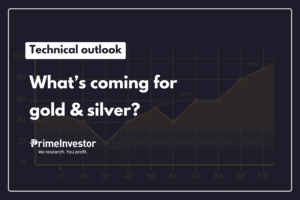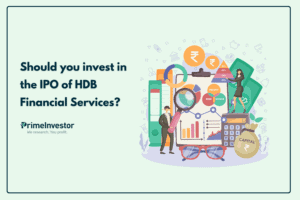“Which equity fund should I buy?” When asked an open-end question like this, most financial experts recommend an index fund. Choosing an index fund is supposed to be far easier than choosing an active fund from the hundreds of schemes. But the number and variety of index funds in India has mushroomed too. There are about 94 open-end equity index funds, while over 120 equity Exchange Traded Funds (ETFs) are listed on the exchanges. So, if you’re thinking of buying an index fund, how do you choose the right one? Here are four metrics to choose the best index funds and ETFs.

#1 Choosing the category
The first decision you’d have to make before buying an index fund is what category would suit you. Apart from the choice between open-end index funds and ETFs (which we’ll come to later), you have three broad categories of index funds to choose from:
- Funds mirroring broad-market indices: Nifty50, Sensex30, Nifty Next50, Nifty Midcap150 and so on.
- Funds mirroring sectoral or thematic indices: Nifty Private Bank Index, Nifty India Consumption Index, BSE Bharat 22 or CPSE ETF, Nifty Healthcare Index etc
- Funds mirroring indices built on a certain style or factor in investing: Nifty Alpha 50, BSE Midcap Value, Nifty Alpha Low Volatility, Nifty 200 Momentum30 etc
Index investing through categories 2 and 3 is a complex affair. To know which sector or theme to choose, you’d need to be an avid tracker of the stock market and know what’s a good time to enter and exit the theme or sector. To choose the right factor, you’d again need to know the kind of market phases in which that particular factor or style will perform.
Therefore, if you’re a first-time investor or even a seasoned investor looking to simplify your life, it is best that you choose your index fund from category 1 above – index funds or ETFs based on broad-market indices. Broad-market index funds are also the best for hands-free investing. Once you choose a good one, you need not switch or exit them, until your goal approaches.
If you do want as return kicker from thematic or factor funds, you will need expert help. PrimeInvestor offers recommendations on thematic/factor index funds and ETFs through Prime ETFs and Prime Funds and flag the right times to enter/exit through articles like this one.
#2 Index mandate and record
While sticking to broad-market index funds narrows your choices, picking the right fund is still no breeze. Within this category, you again have a wide choice. India has ETFs and index funds tracking the following indices: Nifty50, Sensex30, Nifty Next50 (also known as Junior Nifty), Nifty 100, Nifty Midcap150, Nifty Smallcap50, Nifty Large and Midcap 250, Nifty Smallcap 250, BSE500 and Nifty 500.
To sift through this bunch and decide one the one you want, you should use these criteria:
- the composition and mandate of the index
- its risk profile and track record.
Understanding the mandate and composition of an index is necessary to understand what kind of returns. Indices tracking bluechip stocks such as the Nifty 50 or Sensex 30 will invest in the largest stocks by market capitalisation and may deliver predictable low double-digit returns, faring better during choppy markets. Indices mirroring the midcap or small universe will tend to deliver more volatile returns with big returns in trending bull markets.
To make a more nuanced choice, you need to delve deeper into the composition of the index you seek to mirror. Most of the information you seek will be available from the latest monthly factsheets in the Nifty indices website. For instance, comparing the Nifty Next 50 and Nifty Midcap 150, you see that Nifty Next 50 owns stocks that fall within the top 100 by m-cap, while the Nifty Midcap 150 invests in the 150 stocks below the top 100 by m-cap.
The Nifty Next 50 has financial services (18%), FMCG (14%), capital goods (10%) as its top three exposures, with a less than 5% position each in its top 10 holdings. The Nifty Midcap 150 has more concentrated sector exposure with finance (22%), healthcare (11%) and capital goods (12%) as its top bets. But its top stock holdings account for 1-2% each of the portfolio. Do not give too much weight to the current portfolio of an index need as it can change with time (Read our earlier article on Adani stocks and Nifty Next 50 to understand this point)
To assess the risk profile of an index, sector/stock concentration and portfolio PE multiples can help. A high entry PE can make for higher downside risks in a falling market. Metrics such as the standard deviation of past returns offer cues about the bumpiness of index returns. It is only to be expected that Nifty Next50 returns with a standard deviation of 17% (one year) would be more volatile than the Nifty50 which had a standard deviation of 14%. Surprisingly, the Nifty Midcap 150, comprised of smaller stocks manages lower volatility of returns than the Nifty Next 50, with a standard deviation of 15.5%!
For entering the market, our Nifty Valuation momentum indicator (VMI) market mood tool will help you gauge both fundamental and momentum factors and tell you whether it is a good time to invest. With index investing, as with any other kind, the proof of the pudding is in the eating. Therefore, however impressive an index’ mandate, you shouldn’t invest in it without taking a hard look at its track record. Here, point-to-point returns are of little use, and it is best to use rolling returns over an extended period, preferably over market cycles.
You can use PrimeInvestor’s MF Screener to gauge if in certain categories, the index is doing far better than the funds and how the average rolling returns of the indices compare. For instance, the Nifty Midcap150 has a better track record than the Nifty Next 50 on a rolling return basis and fares well on downside containment as well. This earlier article does the comparison.
#3 Expense ratio
Once you’ve decided on the index to buy, you’ll need to choose between the different AMCs’ products. So, how do you choose between say, a Nippon India Midcap 150 Index Fund and a SBI Nifty Midcap 150 Index Fund? Aren’t they the same? They may not be. One metric you must have a look at, is the fee the fund charges. In active funds, you can make allowances for one fund manager being better than another in selecting stocks, while comparing fees. But in index funds, all the fund manager has to do to is to mirror the index. Therefore, TER or total expense ratio is a big differentiator.
Running a screener on open-end index funds in Primeinvestor.in shows that the TERs for direct plans fell in a wide range of 0.06% to 0.57%. Typically, funds playing on widely tracked indices such as Nifty50, Sensex30 and Nifty100 have lower TERs of 0.06-0.20%. More specialised ones and those playing on factor indices (momentum, value, low volatility etc) have higher TERs of 0.30-0.60% for direct plans.
ETFs (especially of bellwether indices) usually have lower TERs than open-end index funds. But given that the majority of ETFs in India are not widely traded, the market prices of units can move away off the underlying NAV, adding to your costs of investing. You will also incur brokerage charges and taxes with ETFs in addition to TERs. Therefore, while buying ETFs, trading volumes on the exchange are a key metric to track. Lower the volumes, higher the chance of prices straying from the NAV. Prime ETF Ratings tool helps you compare ETFs based on turnover, returns and other metrics. This previous article highlights how you can select ETFs.
But in general, if an open-end index fund is available for the index of your choice, you should go for it over an ETF because the costs are predictable.
#4 Tracking error and difference
You prefer an index fund over an active fund because you want it to mimic a chosen index at low cost. But what if turns out to be highly inefficient in shadowing the index? The ability of an index fund or ETF to faithfully mirror its benchmark is captured through two metrics – Tracking Error and Tracking Difference.
SEBI requires all fund houses operating ETFs or index funds to calculate and disclose both metrics on their websites. Tracking error is to be calculated and disclosed on daily one- year rolling return basis, while tracking difference is to be disclosed for 1,3, 5 and 10 year periods and disclosed on a monthly basis.
Tracking difference is simply the difference in returns (expressed in percentage points) between the returns of an ETF/Index fund and its underlying index (on a total return basis) over a specified period. Tracking error is a more complicated metric which measures the extent to which the fund’s returns deviated from its index. It is calculated as the annualized standard deviation of daily return differences between the total returns of the fund and the total returns of the index. SEBI caps the tracking error allowed to equity index funds/ETFs at 2%, but some funds do exceed this limit on occasion.
As tracking difference is a far easier metric for investors to interpret, you can check this out before investing in an ETF or index fund to gauge how efficient it is at shadowing the index. (use our MF screener for index funds to check tracking error).
Generally, ETFs or index funds tracking the bellwether indices (with actively traded and liquid stocks) such as Nifty50, Sensex30 and Nifty Next50 are the most efficient, as they are able to replicate index changes without huge impact costs. Indices reflecting mid-cap, small-cap, Nifty500/BSE500 and factor indices tend to feature big tracking errors/differences due to illiquidity in small/mid-cap stocks, which makes for high impact costs.
Indices with high churn in composition such as Nifty Next 50 can also contribute to high tracking differences for the funds mirroring them. To illustrate, the latest disclosures of Nippon India AMC show that while Nippon India Nifty 50 Bees trailed its index only by 0.10% a year in the last five years, Nippon Nifty100 ETF trailed it by 0.94%. Index funds and ETFs with very small asset sizes or those tracking illiquid indices can have higher tracking errors. Higher TERs also add to the tracking difference and error.
If all of this makes index investing seem less simple than you thought, take heart from the thought that you need not do it often. If you find the right index funds for your goals and risk appetite, you can simply hang on, until your goal is reached.
And of course, you have Prime ETFs and Prime Funds (check the separate sub-head called Passive funds under both Equity moderate and Equity -Aggressive funds) to choose your passive funds from, if you do not wish to do your own research.
Tools and Recommendations you can use to choose passive funds and active funds.
- Prime Funds (check under Passive funds sub-heads)
- Prime ETFs
- MF Screener (choose Equity – index funds)
- Prime ETF Ratings
- Prime MF Ratings (choose index funds)








6 thoughts on “4 Metrics to choose the best index funds and ETFs”
IT SEEMS NIPPON iNDIA MIDCAP 150 etf HAS DONE BETTER THAN ITS INDEX FUND TRACKING DIFFERENCE OF -.36 VS -.74 SINCE INCEPTION AND THAT TOO ETF INCEPTION IS MUCH EARLIER THAN INDEX FUND
UNDER WHICH LINK CAN ONE FIND THE TRACKING ERROR ON MUTUAL FUND WEBSITES?
Good Article Aarati. Thank you !
Thanks for a nice article .Does the Nippon midcap 150 index fund invest in the underlying Nippon midcap 150 ETF.ABSL midcap 150 has lower tracking error than Nippon midcap 150 but AUM of only 80 CR vs 500+ Cr .Which one should one choose
Please go by one with lower tracking error over a period of time. In other words, avoid new launches and look for some track record of tracking error. On this count, both ABSL and Nippon score well. In shorter periods, they are neck to neck. AUM need not be a big criteria although one of it. Expense ratio must be considered. Nippon scores better on that count.Vidya
Other things remaining same, how to think about new players entering the fray and expense ratios?
Suppose I have a few index funds (N50, NN50, S&P 500 and NASDAQ 100). Other things remaining same, I want to optimize for low expense ratio. Some players may do “introductory” low expense ratio and then jack up, whereas others may be focused on low cost index funds. Then there is the angle of competition.
In that scenario, do I keep hopping from AMC to AMC every few years to have the lowest cost index funds (ceteris paribus)? What prudent practical strategy would you suggest? Especially relevant because the immediate few months/ years have new entrants like Navi/Zerodha+Smallcase/CapitalMind/Helios etc.
No you need not hop. Wait for them to build a record 🙂 Nothing to lose. Vidya
Comments are closed.